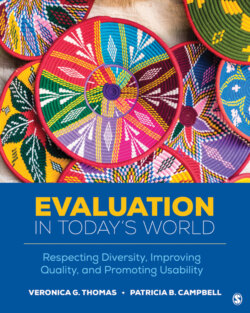Читать книгу Evaluation in Today’s World - Veronica G. Thomas - Страница 30
На сайте Литреса книга снята с продажи.
Implicit Bias
ОглавлениеWhile some biases are explicit, others are implicit. According to the Kirwan Institute at The Ohio State University (Staats, Capatosto, Tenney, & Mamo, 2017, p. 10), implicit bias refers to “the attitudes or stereotypes that affect our understanding, actions, and decisions in an unconscious manner.” Like explicit biases, they can impact assessments and judgments, both favorably and unfavorably. But unlike explicit biases, implicit biases are “activated involuntarily, without awareness or intentional control” (Staats et al., 2017, p. 10). The following are some key characteristics of implicit biases (Staats et al., 2017).
Implicit biases are pervasive. Everyone possesses them, even people with avowed commitments to impartiality, such as judges.
Implicit and explicit biases are related but distinct mental constructs. They are not mutually exclusive and may even reinforce each other.
The implicit associations we hold do not necessarily align with our declared beliefs or even reflect stances we would explicitly endorse.
We generally tend to hold implicit biases that favor our own in-group, though research has shown that we can still hold implicit biases against our in-group.
Implicit biases are malleable. Our brains are incredibly complex, and the implicit associations that we have formed can be gradually unlearned through a variety of de-biasing techniques.
It is difficult to understate the importance of considering the role of implicit bias when analyzing societal inequities. Implicit biases, explicit biases, and structural forces are often mutually reinforcing. Research on implicit bias suggests that many of our decisions regarding racial stereotypes are made at unconscious level (e.g., Greenwald & Banaji, 1995; Staats, 2017). For example, Harvard University’s Project Implicit (2011b) has found most Americans have an automatic preference for white people over Black people, and often have automatic preferences for straight people over gay people and for young people over old people. In addition, the Project Implicit researchers have found stronger links between females and family and between males and careers. Similarly, they have found stronger links between females and the liberal arts and between males and science. This does not mean that people are racist or homophobic or believe that a woman’s role is in the kitchen, but it does mean that people are influenced, consciously and unconsciously, by the environment around them. Referring to race, Project Implicit (2011b, para. 17) explains that “implicit preferences for majority groups (e.g., white people) are likely common because of strong negative associations with Black people in American society. There is a long history of racial discrimination in the United States, and Black people are often portrayed negatively in culture and mass media.” There are also implicit stereotypes, or those that are “relatively inaccessible to conscious awareness and/or control. Even if you say that men and women are equally good at math, it is possible that you associate math more strongly with men without being actively aware of it. In this case we would say that you have an implicit math + men stereotype” (Project Implicit, 2011b, para. 2). One way to explore implicit biases is, as described in the following activity, to take the Implicit Association Test (IAT).
